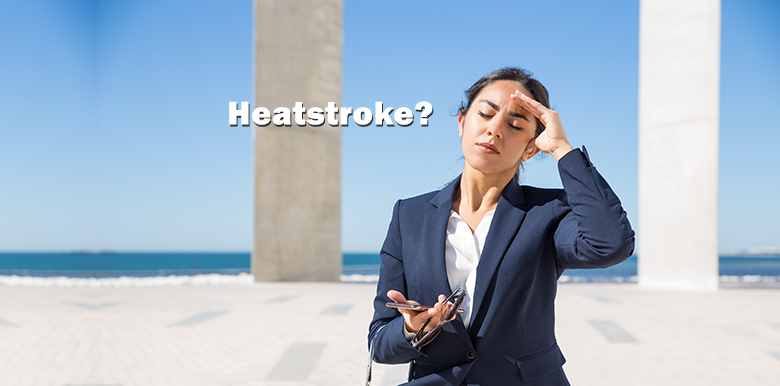Heatstroke occurs when the body temperature is elevated dramatically. The cause of heatstroke is an elevation in body temperature, often accompanied by dehydration.
Causes of heatstroke –
Your body’s heat combined with environmental heat results in what’s called your core temperature — your body’s internal temperature. Your body needs to regulate the heat gain (and, in cold weather, heat loss) from the environment to maintain a core temperature that’s normal, approximately 98.6 F (37 C).
Your body’s failure to cool itself

Heatstroke
In hot weather, your body cools itself mainly by sweating. The evaporation of your sweat regulates your body temperature. However, when you exercise strenuously or otherwise overexert in hot, humid weather, your body is less able to cool itself efficiently.
As a result, your body may develop heat cramps, the mildest form of heat-related illness. Signs and symptoms of heat cramps usually include heavy sweating, fatigue, thirst and muscle cramps. Prompt treatment usually prevents heat cramps from progressing to heat exhaustion.
You usually can treat heat cramps by drinking fluids or sports drinks containing electrolytes (Gatorade, Powerade, others), getting into cooler temperatures, such as an air-conditioned or shaded place, and resting.
Other causes
Besides hot weather and strenuous activity, other causes of heat exhaustion include:
Dehydration, which reduces your body’s ability to sweat and maintain a normal temperature
Alcohol use, which can affect your body’s ability to regulate your temperature
Overdressing, particularly in clothes that don’t allow sweat to evaporate easily
Symptoms
Signs and symptoms of heat exhaustion may develop suddenly or over time, especially with prolonged periods of exercise. Possible heat exhaustion signs and symptoms include:
Cool, moist skin with goose bumps when in the heat
Heavy sweating
Faintness
Dizziness
Fatigue
Weak, rapid pulse
Low blood pressure upon standing
Muscle cramps
Nausea
Headache
Prevention
You can take a number of precautions to prevent heat exhaustion and other heat-related illnesses. When temperatures climb, remember to:
Wear loosefitting, lightweight clothing – Wearing excess clothing or clothing that fits tightly won’t allow your body to cool properly.
Protect against sunburn – Sunburn affects your body’s ability to cool itself, so protect yourself outdoors with a wide-brimmed hat and sunglasses and use a broad-spectrum sunscreen with an SPF of at least 15. Apply sunscreen generously, and reapply every two hours — or more often if you’re swimming or sweating.
Drink plenty of fluids – Staying hydrated will help your body sweat and maintain a normal body temperature.
Take extra precautions with certain medications – Be on the lookout for heat-related problems if you take medications that can affect your body’s ability to stay hydrated and dissipate heat.
Never leave anyone in a parked car – This is a common cause of heat-related deaths in children. When parked in the sun, the temperature in your car can rise 20 degrees Fahrenheit (more than 6.7 C) in 10 minutes.
It’s not safe to leave a person in a parked car in warm or hot weather, even if the windows are cracked or the car is in shade. When your car is parked, keep it locked to prevent a child from getting inside.
Take it easy during the hottest parts of the day – If you can’t avoid strenuous activity in hot weather, drink fluids and rest frequently in a cool spot. Try to schedule exercise or physical labor for cooler parts of the day, such as early morning or evening.
Get acclimated – Limit time spent working or exercising in heat until you’re conditioned to it. People who are not used to hot weather are especially susceptible to heat-related illness. It can take several weeks for your body to adjust to hot weather.
